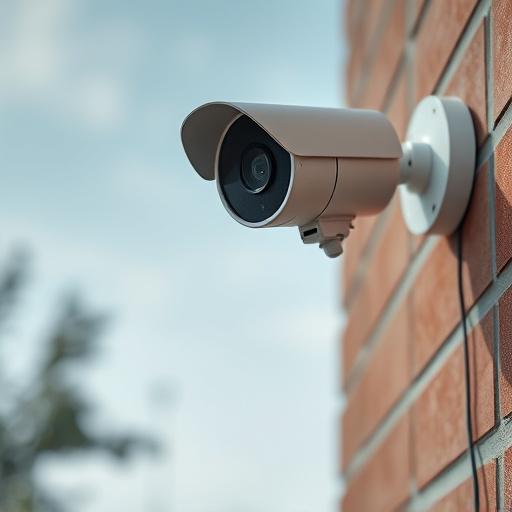Blinking LED fake security cameras tap into human fears of visibility and accountability, deterring crime by signaling constant surveillance. Strategically place them in visible entry points and well-lit areas for maximum effect. Their intermittent blinking pattern discourages intruders and improves security, especially in high-risk zones. Effective placement, realistic movement simulations, and unpredictable positioning enhance their deterrent impact, reducing break-ins and thefts as shown by case studies.
“Enhance your home or business security with strategic placement of blinking LED fake security cameras. This comprehensive guide explores the psychology behind deterring potential thieves, offering effective placement strategies for maximum impact. Learn from common mistakes and study successful case implementations. Discover how these innovative devices can transform your safety landscape, providing a robust first line of defense against unauthorized entry.”
- Understanding Fake Security Camera Psychology
- Placement Strategies for Maximum Deterrence
- Utilizing Blinking LED Cameras Effectively
- Common Mistakes to Avoid in Camera Placement
- Case Studies: Successful Fake Camera Implementations
Understanding Fake Security Camera Psychology
Understanding the psychology behind how fake security cameras, often featuring blinking LEDs, are perceived can significantly enhance their effectiveness as a deterrent. These simulated surveillance devices tap into human instincts and fears related to visibility and accountability. The simple act of mimicking real camera activity with periodic blinking can create an illusion of constant observation, deterring potential criminals from targeting properties.
This psychological strategy leverages the idea that individuals, when aware they might be under watchful eyes, are more likely to behave in a way that aligns with societal norms and laws. By strategically placing these fake cameras, especially in visible areas where they can be easily spotted, homeowners and businesses can create an environment that discourages illicit activities. The presence of blinking LEDs adds a layer of realism that reinforces the message: “We are being watched.”
Placement Strategies for Maximum Deterrence
The placement of blinking LED fake security cameras is a strategic art designed to instill fear in potential intruders. Positioning them at visible entry points, such as front doors, garages, and windows, sends a clear message that your property is under surveillance. This simple yet effective tactic can act as a powerful deterrent, as criminals are often deterred by the perception of being watched.
For maximum impact, consider placing these cameras in areas with good visibility and natural light during the day. Nighttime visibility is also crucial, so ensure the LED lights are bright enough to capture clear images. Strategically positioning them on corners or near windows can create a false sense of awareness, making it harder for intruders to approach unnoticed.
Utilizing Blinking LED Cameras Effectively
Blinking LED fake security cameras can significantly enhance home or business security by creating a perception of constant surveillance. Their intermittent blinking pattern mimics the behavior of genuine security systems, deterring potential intruders who may be less likely to target properties with active camera monitoring. This strategic use of technology is particularly effective in areas prone to theft or vandalism.
When placing these cameras, consider high-risk zones like entry points, such as front doors, windows, and garage entrances. Mounting them at visible angles but not too obviously as fake can maximize their deterrent effect. Additionally, positioning them in well-lit locations ensures better image quality during any potential activation, providing clear evidence for law enforcement or security personnel.
Common Mistakes to Avoid in Camera Placement
Many homeowners and business owners make the mistake of relying solely on blinking LED fake security cameras as a deterrent, placing them in obvious, easily accessible areas. While these cameras can be effective in dissuading potential criminals, their impact is significantly reduced if they are too predictable. Criminals often study a location’s security setup, so strategically placing fake cameras in inconspicuous spots can catch them off guard.
Another common oversight is neglecting to simulate genuine activity around the camera. Realistic movement, like a figure entering or exiting a room, makes the camera appear active. Ignoring this detail can make even the most sophisticated blinking LED fake security camera look stale and obvious, failing to serve its purpose as a deterrent.
Case Studies: Successful Fake Camera Implementations
In recent years, the strategic placement of blinking LED fake security cameras has proven to be a game-changer in enhancing physical security for both residential and commercial properties. Case studies from various regions highlight successful implementations where these cleverly designed devices have deterred potential criminals, providing a false sense of surveillance that significantly improves overall safety. For instance, in suburban neighborhoods plagued by break-ins, the installation of blinking LED fake cameras mounted on poles or trees has led to a notable decrease in crime rates, as observed in a study conducted by local law enforcement agencies.
Similarly, business owners have embraced this innovative approach to deter theft and vandalism. By strategically placing these fake cameras in high-risk areas like parking lots, entrances, and display windows, they create an environment that discourages criminal activity. A retail store in a busy downtown area witnessed a substantial reduction in shoplifting incidents after adopting blinking LED fake security cameras as part of their loss prevention strategy. These case studies underscore the effectiveness of fake camera systems in deterring criminals and providing peace of mind for property owners.
Blinking LED fake security cameras, when strategically placed, can significantly enhance real security measures. By understanding human behavior and leveraging psychological principles, these decoys can deter potential criminals effectively. Placement strategies, such as high-visibility areas and strategic angles, maximize their deterrent effect. Avoiding common mistakes in camera placement is crucial for achieving optimal results. Successful case studies demonstrate the transformative power of well-designed fake security camera implementations, offering valuable insights for property owners and security professionals alike.
